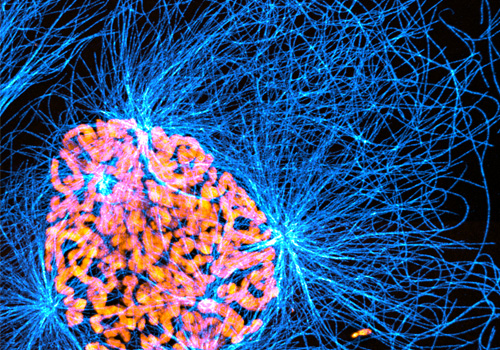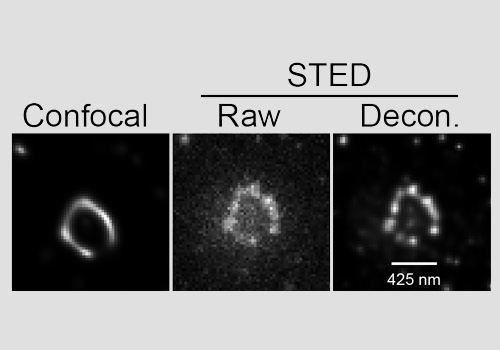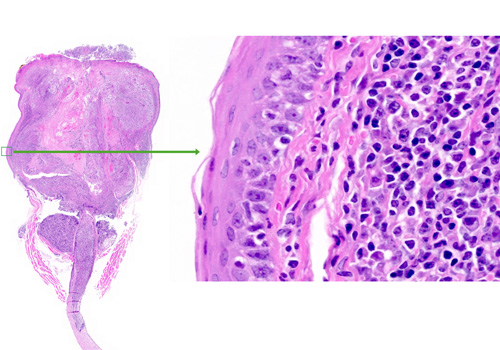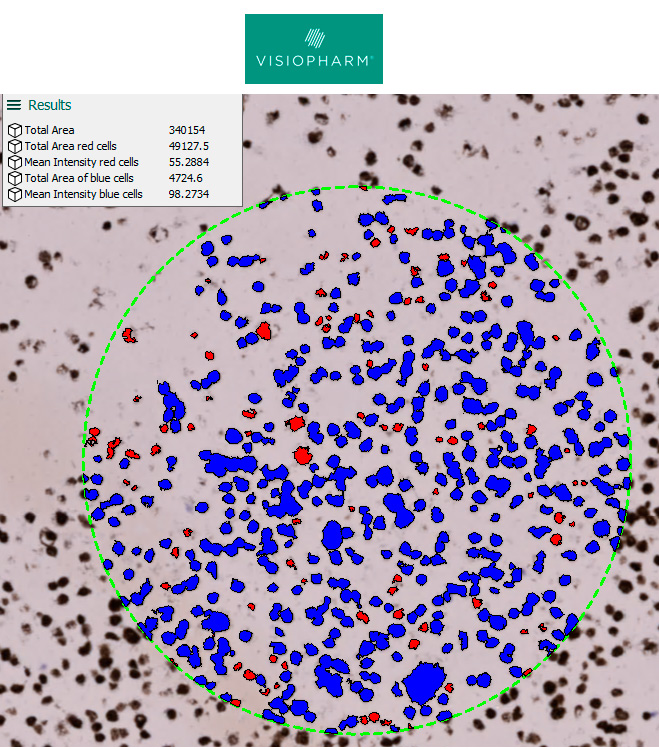|
Location
|
865 (SW)
|
Orde 6-1001-2 (Microscope Room A)
|
Orde 6-1001-2 (Microscope Room A)
|
Orde 6-1014-1 (Tissue Culture Microscope)
|
|
System Type
|
Histo-fluor (Camera-based)
|
WF/Structured Illumination and Deconvolution
|
Histology, Colour camera
|
Basic Histology and WF fluorescence, Colour camera
|
|
Model
|
Olympus
|
OptiGrid on IX81 and Huygens Deconvolution
|
Olympus
|
Leica inverted, basic, photography and simple measurements/image processing
|
|
Microscope
|
Olympus BX61
|
Olympus IX81 inverted
|
Olympus BX61
|
DMIL LED
|
|
Lenses
|
4x UPlanSApo 0.16 NA, air
10x UPlanSApo 0.40 NA, air
20x UPlanSApo 0.75NA, air
40x UPlanFLN 1.30 NA, oil
60x PlanApoN 1.42 NA, oil
100x UPlanSApo 1.40 NA, oil
|
10x air UPlanSApro 0.4NA, 20x air UPlanSApro 0.75 NA,
40x air UPlanSApro 0.95 NA , 40x oil UPlanFL N 1.3 NA ,
40x oil UPlanFL N 1.3 NA ,
60x air UPlanSPApo 1.45 NA,
100x air UPlanSApo 1.4 NA
|
Dry 2/0.08, 10/0.4, 20/0.75, 40/0.95
Oil 60/1.35, 100/1.4
|
Dry 4/0.10, PH10/0.25, PH20/0.35, PH40/0.55 corrected
|
|
Vibration Isolation
|
No
|
No
|
No
|
No
|
|
Stage
|
Manual xy, Slide spring clip
|
Motorized xyz, Slide/Plate holder, Software-integrated
|
Motorized xyz, Multislide holder, Software-integrated
|
Manual xyz, Slide, Dish holder
|
|
Z-Focus
|
Integrated objective z-drive
|
Microscope and Autofocus
|
Microscope and Autofocus capable
|
Manual not integrated
|
|
Illumination
|
EXFO X-Cite 120
|
a) Halogen 12V 100W
|
Hallogen 12V100W
|
EXFO X-Cite 120 and 5W LED
|
|
Filtering
|
DAPI
FITC
TxRed
CFP
YFP
BF-brightfield
|
b) EXFO X-Cite Exacte
|
|
DAPI/FITC/TR triple bandpass
FITC
|
|
Detector
|
a) Fluor camera: Hamamatsu DP71 camera
b) Color camera: Olympus DP71
|
a) Filter cubes: 377/447, 436/480, 482/536, 500/535, 562/624, 620/700
b) Triple bandpas (blue/green/red) for eyepiece viewing
c) DIC
|
DIC and BF
|
MicroPublisher 5.0 RTV Colour Camera
|
|
Software
|
Volocity Xp
DP Controller
|
Hamamatsu OrcaR2 CCD Camera
|
CCD Colour Camera Olympus DP72
|
QCapture Pro 6.0 /Win XP 32
|
|
Offline analysis
|
Volocity
|
Volocity/
|
N/A
|
Same Computer
|
|
Other Features
|
|
Volocity Visualization, Quantitation, and Restoration, Huygens deconvolution and Imaris modules/Win7 64/td>
Multi-point acquisition, Multi-frame scan,
|
Olympus CellSens
Visiopharm Image analysis on virtual slides from any scanner
The highest BF resolution with 1.4NA oil condenser
|
|





